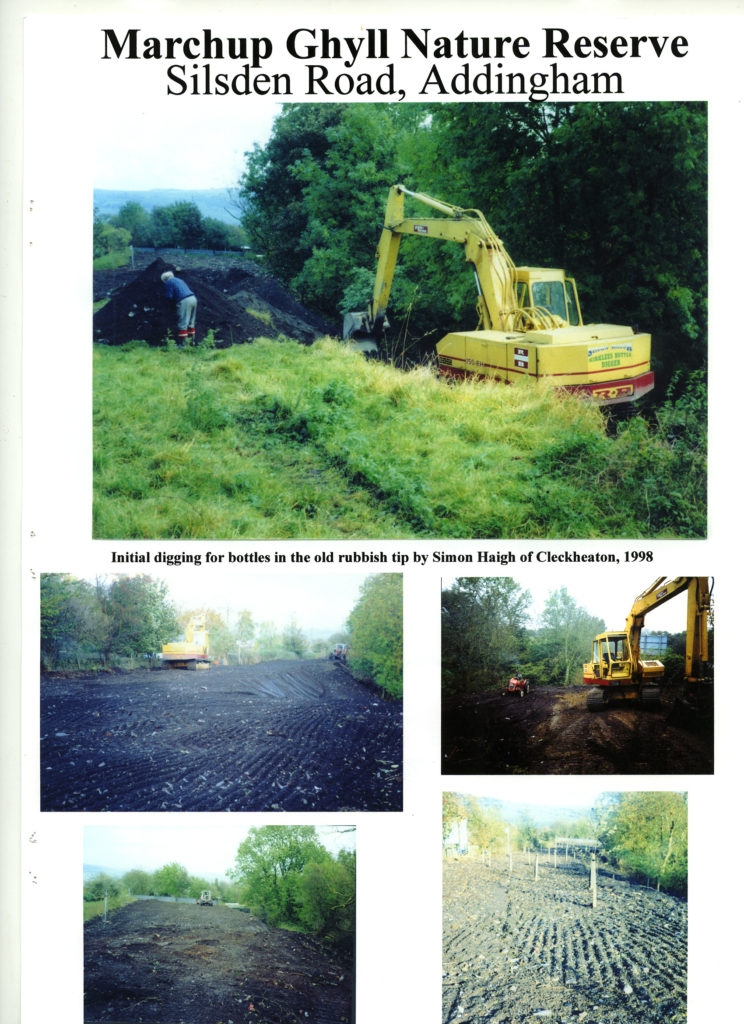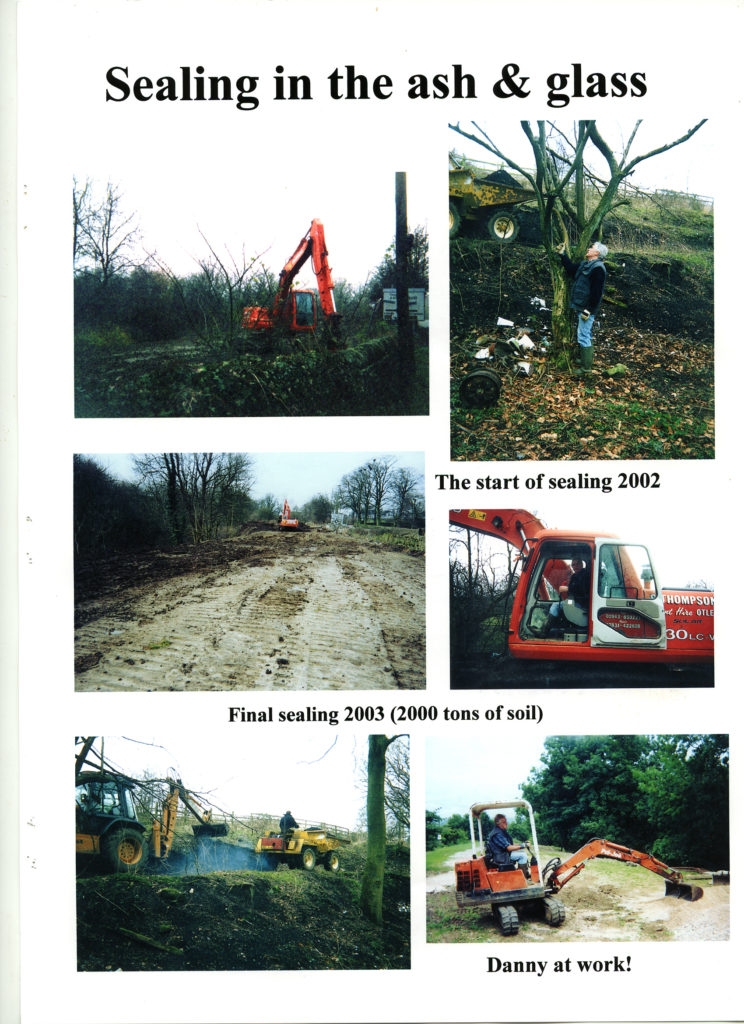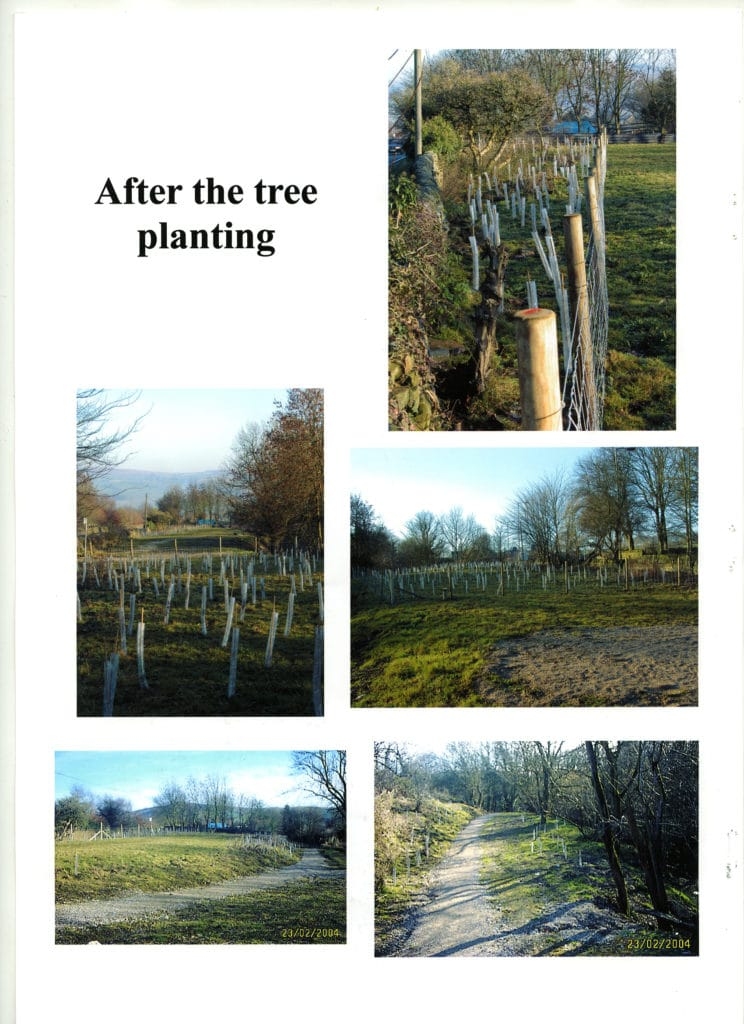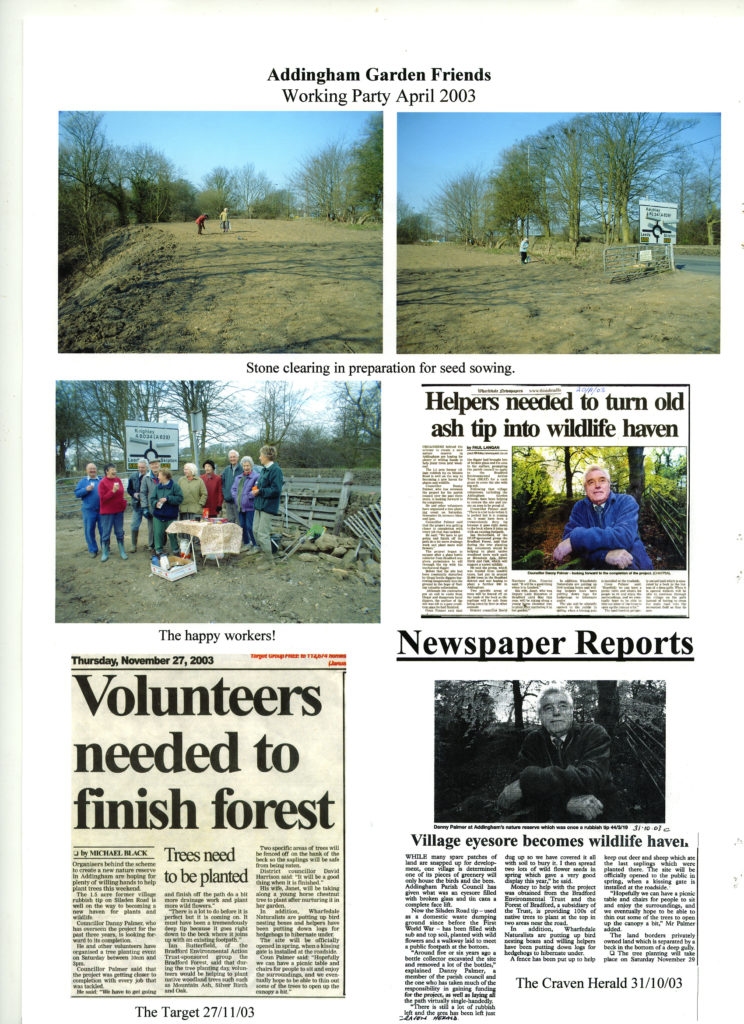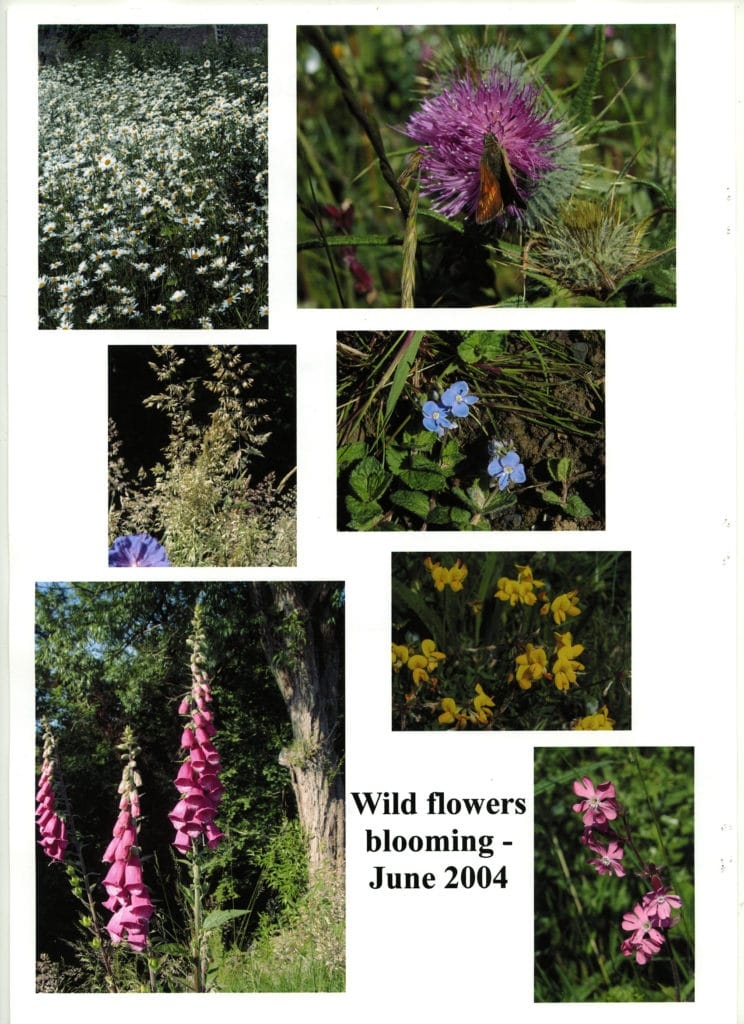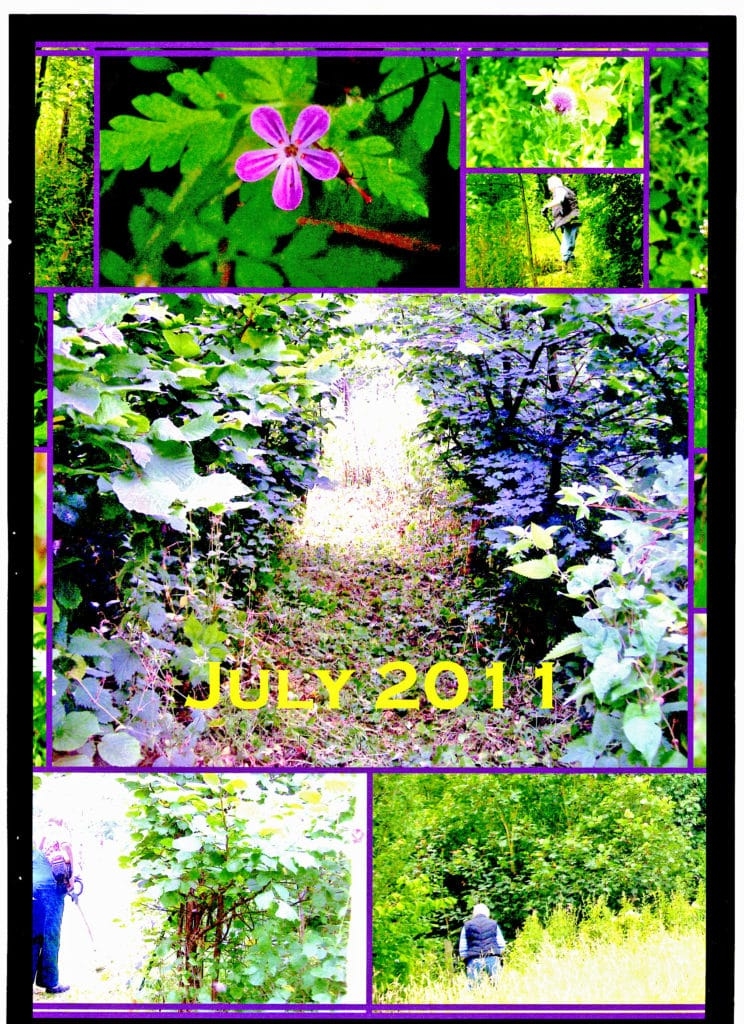The Daniel Palmer Nature Reserve
Marchup Ghyll, Silsden Road, Addingham
From Rubbish Tip to Nature Reserve
In 1998 Daniel Palmer had the vision to turn the former rubbish and ash tip at Marchup Ghyll into a place that both nature and village residents could enjoy. The site needed to be cleared of all the rubbish and some interesting old pot bottles, pots and glass were found.
Unfortunately work on the nature reserve had to be suspended in 2001 due to the outbreak of foot and mouth disease. Work recommenced in 2002 involving sealing the surface of the ash with 20,000 tons of clay sub-soil, followed by 2000 tons of top-soil. Once the site was levelled in 2003 the clearing of stones in preparation for the sowing of seeds began. This consisted of grass seed as well as a selection of wildflowers.
November 2003 was the big event as 1,500 trees needed to be planted, achieved with a call for help for volunteers including the primary school children who helped in creating the top wood and bottom wood. Once the trees were planted the path was formed enabling visitors to walk round and through the top wood as well as down to the stream. In 2004 the Nature Reserve was officially opened. The wildflowers were in full bloom. It didn’t take long for wildlife to visit their new home and, with the placement of nest boxes, birds were attracted to the new environment.
Daniel worked tirelessly to create this Nature Reserve with the help of family and a few friends. Sadly in 2008 Daniel suffered a severe stroke which left him wheelchair bound. However this did not stop him from visiting the Reserve to make sure all was in order and to let his family know what needed to be done. With the support of the Parish Council and Addingham Garden Friends, Daniel’s family continue to manage and maintain the Nature Reserve, striving to enhance the site which Daniel so passionately created.
Today, almost twenty years after Daniel’s first idea the Reserve is beginning to mature, wildflowers have become well-established and the trees are growing well. In 2016 some trees were coppiced and log piles were created for wildlife.
Wendy Palmer, Natalie Smith and Greg Palmer


